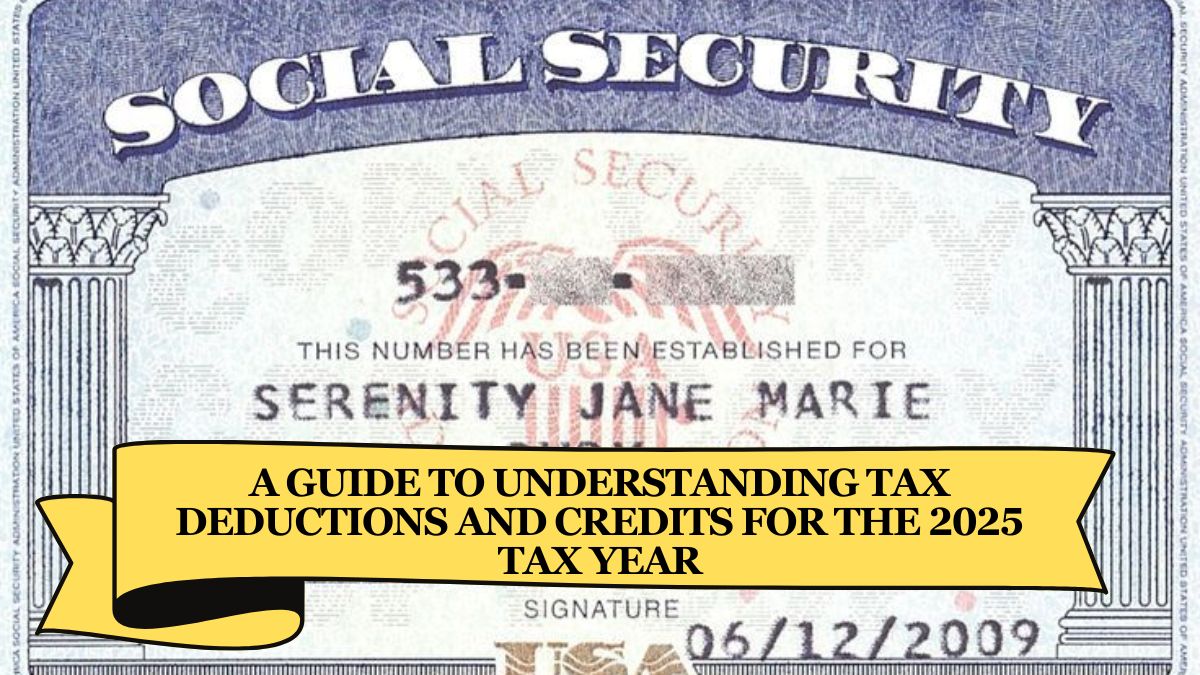As tax season approaches, it’s time to start thinking about filing your taxes and how you can maximise your refund. While taxes can seem complicated, understanding some basic tax deductions and credits can help you reduce the amount of taxes you owe or even increase your refund. If you’re new to taxes or unsure about what you can deduct, it’s helpful to know which tax breaks you might be eligible for. This guide will cover important tax credits and deductions available for the 2025 tax year and explain how they can benefit you.
Understanding Tax Deductions and Credits
Tax deductions and credits are tools the government provides to help you pay less in taxes. Deductions reduce the amount of your income that is taxed, while credits directly reduce the amount of tax you owe. Knowing how to use both can make a big difference in the amount of money you get back when you file your taxes.
Tax Credits That Can Save You Money
1. American Opportunity Tax Credit (AOTC)
The American Opportunity Tax Credit is a valuable tax credit for students. If you’re in your first four years of college and you’re not claimed as a dependent by someone else, you can get up to $2,500 for your college expenses. This credit covers things like tuition, books, and other costs of education. It’s an excellent way to help ease the financial burden of school.
2. Earned Income Tax Credit (EITC)
If you’re working but have a lower income, you might be eligible for the Earned Income Tax Credit. For single filers with no dependents earning less than $18,591, this credit can provide up to $632. If you have three or more dependents and earn below $59,899, you could receive a much higher credit—up to $7,830. The EITC can make a big difference for lower-income families.
3. Lifetime Learning Credit
Another credit that helps with education expenses is the Lifetime Learning Credit. Unlike the AOTC, this credit is available for any level of post-secondary education. Whether you’re taking college classes or learning new job skills, this credit can cover up to $2,000 in tuition and related expenses. It’s a great way to keep your education affordable no matter where you are in life.
4. Saver’s Credit for Retirement Savings
If you’re saving for retirement, you may qualify for the Saver’s Credit. This credit helps lower-income individuals who contribute to a retirement account like a traditional or Roth IRA. Depending on your income level, you can get a credit of 50%, 20%, or 10% of your contributions. This is a great way to save for the future and get some immediate tax relief.
Deductions to Lower Your Taxable Income
1. Student Loan Interest Deduction
For those who are paying off student loans, there is a useful deduction available. You can deduct up to $2,500 of the interest you pay on your student loans each year. This helps reduce the amount of taxable income you report, meaning you’ll pay less in taxes.
2. The Standard Deduction
The standard deduction is one of the most common ways to reduce taxable income. For single filers, the standard deduction for 2025 is $14,600. If you’re married and filing jointly, you can deduct $29,200. Heads of households can deduct $21,900. If you don’t have many other deductible expenses, taking the standard deduction is an easy way to save.
3. IRA and Health Savings Account (HSA) Contributions
If you contribute to an IRA or a Health Savings Account (HSA), you may be able to deduct those contributions from your income. This helps reduce your taxable income, and it’s a good way to save for retirement or healthcare expenses.
4. Business Expenses for Self-Employed Individuals
For self-employed individuals, there are additional deductions for things like business-related travel, office supplies, and even a portion of your rent or utilities if you work from home. However, not everyone who works from home qualifies for a home office deduction—it’s important to meet certain criteria to take advantage of this.
Itemizing Deductions
If you have a lot of deductible expenses, you may want to consider itemising rather than taking the standard deduction. Some common itemised deductions include:
- Donations to charity
- Medical expenses (if they exceed a certain percentage of your income)
- Property taxes and mortgage interest
- Gambling losses
Itemising is only worth it if your total deductions exceed the standard deduction for your filing status, so it’s important to keep track of all your eligible expenses.
Why Understanding Deductions and Credits is Important
By understanding these tax credits and deductions, you can ensure you’re getting the most out of your tax return. Each year, the IRS offers new tax benefits and guidelines, so it’s a good idea to keep up with changes. Working with a tax professional can also help you navigate complex rules and make sure you’re not missing out on valuable opportunities to save.
Remember, tax season doesn’t have to be stressful if you know the right tools to use. Take the time to learn about all available deductions and credits to ensure you pay as little tax as possible and maximise your refund.
Must Visit: California State Online

